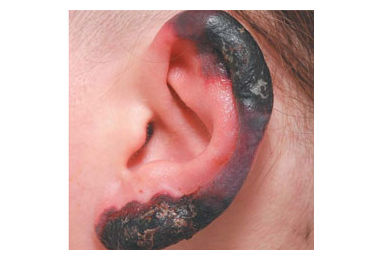
Her skin developed black regions, made up of damaged skin tissue, which appeared over several days.
The heating system in her house had failed for a few days, and outside temperatures dropped to 50 degrees Fahrenheit (10 degrees Celsius), the report said.
Doctors diagnosed the woman with a type of autoimmune disease that is triggered by cold temperatures.
The woman had high levels of antibodies called "cold agglutinins" in her body. Most people have low levels of cold agglutinins, which help the body respond to infection.
When levels of cold agglutinins are too high, they cause red blood cells to clump together, and the clumps can block the flow of blood to the fingers, nose, ears and toes, consequently causing symptoms similar to frostbite.
Doctors removed the damaged skin and treated the woman with drugs that prevent blood clots. She also underwent plasmapheresis, a procedure to purify the blood, and was told to protect herself from cold. The patient's symptoms improved, the doctors said.
The report of her case is published in the July 4 issue of the New England Journal of Medicine.



Reader Comments
to our Newsletter